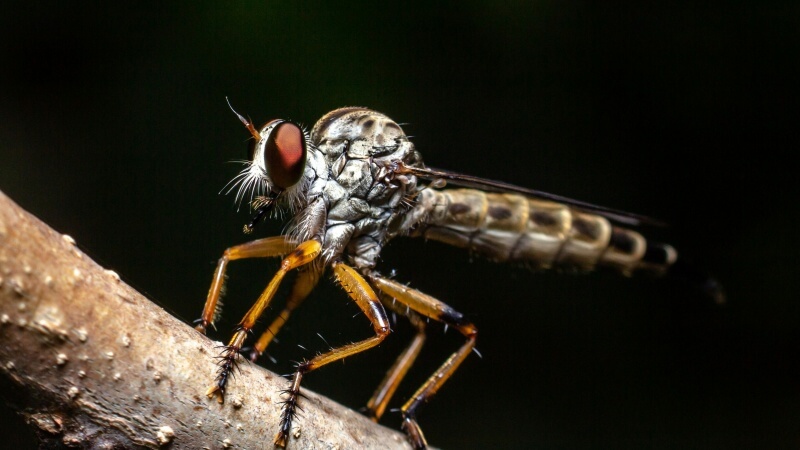
How To Design A Waterproof Mosquito Light
There’s something almost magical about a mosquito light—a beacon in the night that promises to shield us from the irksome buzz and bites of mosquitoes.

As the warmer months approach and outdoor gatherings become more common, an effective bug killer lamp becomes a pivotal choice in ensuring a bug-free experience.
In this comprehensive exploration, we aim to shed light on the discernible distinctions in features and functionalities between solar bug killer lamps and conventional bug killer lamps.
From eco-friendliness to effectiveness, energy efficiency, aesthetics, environmental impact, and more, we leave no stone unturned in assisting you in making an informed choice.
To appreciate the differences between solar bug killer lamp and conventional bug killer lamp, it is essential to establish a solid understanding of the two devices.
Solar bug killer lamps are known for their eco-friendliness and energy efficiency. In this section, we explore their unique characteristics and advantages.
Conventional bug killer lamps, though well-established, offer their unique benefits. This section explores their features and why they might be the ideal choice for specific scenarios.
Environmental considerations are vital when choosing a bug killer lamp. This section evaluates how both solar bug killer lamps and conventional bug killer lamps measure up in this regard.
Solar bug killer lamps are renowned for their environmental benefits. We assess the environmental impact of both types of lamps, considering factors such as materials used, energy sources, and disposal methods.
We explore the sustainability aspects of these devices. How do they contribute to reducing waste, promoting green living, and supporting eco-friendly initiatives?
We delve into the carbon footprint of both types of lamps, assessing their energy efficiency and impact on reducing greenhouse gas emissions.
The visual appeal and integration of these devices into your living space are pivotal. This section discusses how solar bug killer lamps and conventional bug killer lamps enhance the aesthetics and functionality of your surroundings.
We explore the visual impact of these devices and how well they fit into your decor. Whether you have a modern patio or a rustic garden, we discuss how these lamps can complement your style.
Integration is not just about looks but also functionality. We discuss how both types of bug killer lamps can be seamlessly incorporated into your living area, ensuring they not only work efficiently but also enhance your environment’s overall appeal.
We evaluate the considerations for using bug killer lamps in indoor and outdoor spaces. How can you maintain a bug-free environment in all areas of your home, from your living room to your garden?
After a comprehensive examination of the differences between solar bug killer lamps and conventional bug killer lamps, this section provides practical guidance for making the right choice based on your specific needs and preferences.
Real-world experiences and reviews from users who have employed both types of bug killer lamps provide invaluable insights. We share testimonials and feedback on the performance and satisfaction levels of various bug killer lamps.
In addition to choosing the right bug killer lamp, adopting best practices for preventing insect infestations is essential. This section offers tips for bug-free living, from eliminating breeding grounds to using natural repellents.
Q1: Are solar bug zappers effective at night when there’s no sunlight?
A1:Solar bug zappers can be effective at night even when there’s no direct sunlight. They typically have built-in rechargeable batteries that store energy during the day. These batteries power the zapper during the night, ensuring continued bug control.
However, the effectiveness may vary based on the specific model and the battery’s capacity.
Q2: Do conventional bug zappers attract beneficial insects like bees and butterflies?
A2:Conventional bug zappers are designed to attract and eliminate a wide range of flying insects, including some beneficial ones like bees and butterflies.
While they may inadvertently capture these insects, the impact on their populations is generally low. To minimize harm to beneficial insects, consider using bug zappers selectively and during peak insect activity hours.
Q3: How long do the bulbs in bug zappers typically last, and are they replaceable?
A3: The lifespan of bug zapper bulbs varies depending on the type and model. Conventional zappers usually have replaceable bulbs that last several months to a year, while solar zappers often use long-lasting LED bulbs that can endure for years without replacement.
Check the manufacturer’s guidelines for specific information about bulb replacement.
Q4: Are bug zappers safe for indoor use, especially around pets and children?
A4: Conventional bug zappers are generally safe for indoor use as long as they are placed out of reach of children and pets. Solar bug zappers are suitable for outdoor use.
When using indoor bug zappers, it’s essential to follow safety instructions, such as placing them in a secure location and turning them off when not needed.
Q5: Can solar bug zappers function on cloudy or overcast days?
A5:Solar bug zappers are designed to work on both sunny and cloudy days, but their effectiveness may be reduced during extended periods of limited sunlight. They often include backup batteries to compensate for low light conditions.
If you live in an area with frequent cloud cover, consider selecting a solar bug zapper with a larger battery capacity for uninterrupted operation.
In the battle against insects, your choice of a bug killer lamp significantly impacts the effectiveness and aesthetics of your insect control strategy.
Whether you opt for the eco-friendly efficiency of a solar bug killer lamp or the simplicity of a conventional bug killer lamp, the ultimate goal remains the same: to enjoy bite-free evenings in comfort and style.
This in-depth analysis empowers you with the knowledge needed to make an informed decision, ultimately enhancing your quality of life during bug-prone seasons.
With an array of options and considerations at your disposal, you’re well-equipped to select the perfect bug killer lamp for your needs, ensuring that pesky insects won’t dampen your outdoor adventures or peaceful nights indoors.


There’s something almost magical about a mosquito light—a beacon in the night that promises to shield us from the irksome buzz and bites of mosquitoes.

Within the first few moments of considering a mosquito light, the idea transforms from a mere concept into a beacon of hope against the nightly

The moment you switch on a mosquito light, you declare war on those pesky insects. But what if I told you that you could turbocharge

Imagine this scenario: as the hues of twilight blend into the evening sky, your mosquito light buzzes to life, standing guard against the night’s swarm

There’s something almost magical about a mosquito light—a beacon in the night that promises to shield us from the irksome buzz and bites of mosquitoes.

Within the first few moments of considering a mosquito light, the idea transforms from a mere concept into a beacon of hope against the nightly

The moment you switch on a mosquito light, you declare war on those pesky insects. But what if I told you that you could turbocharge

Imagine this scenario: as the hues of twilight blend into the evening sky, your mosquito light buzzes to life, standing guard against the night’s swarm
Copyright © 2025 mosquitokillerlight. All Rights Reserved.